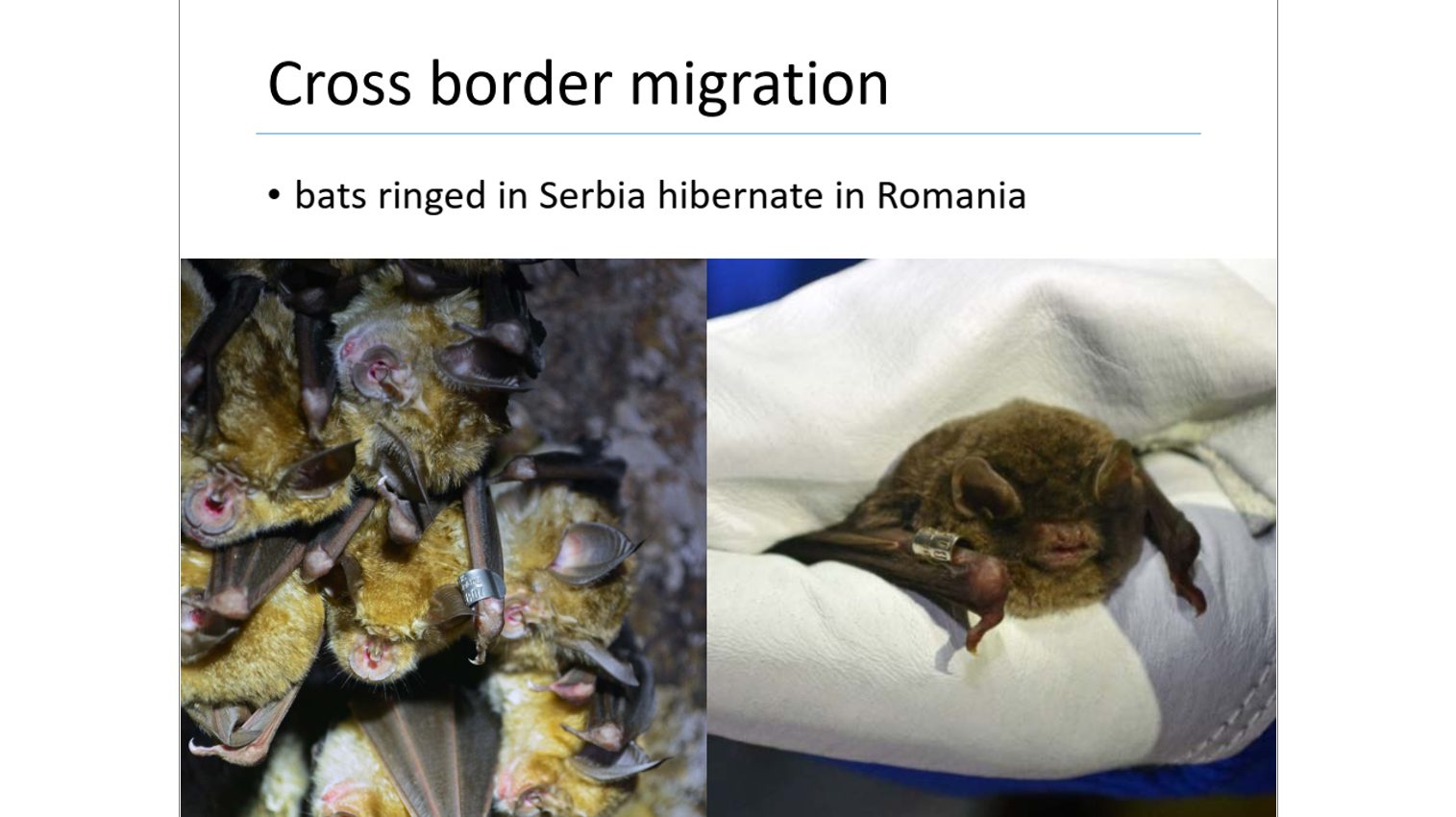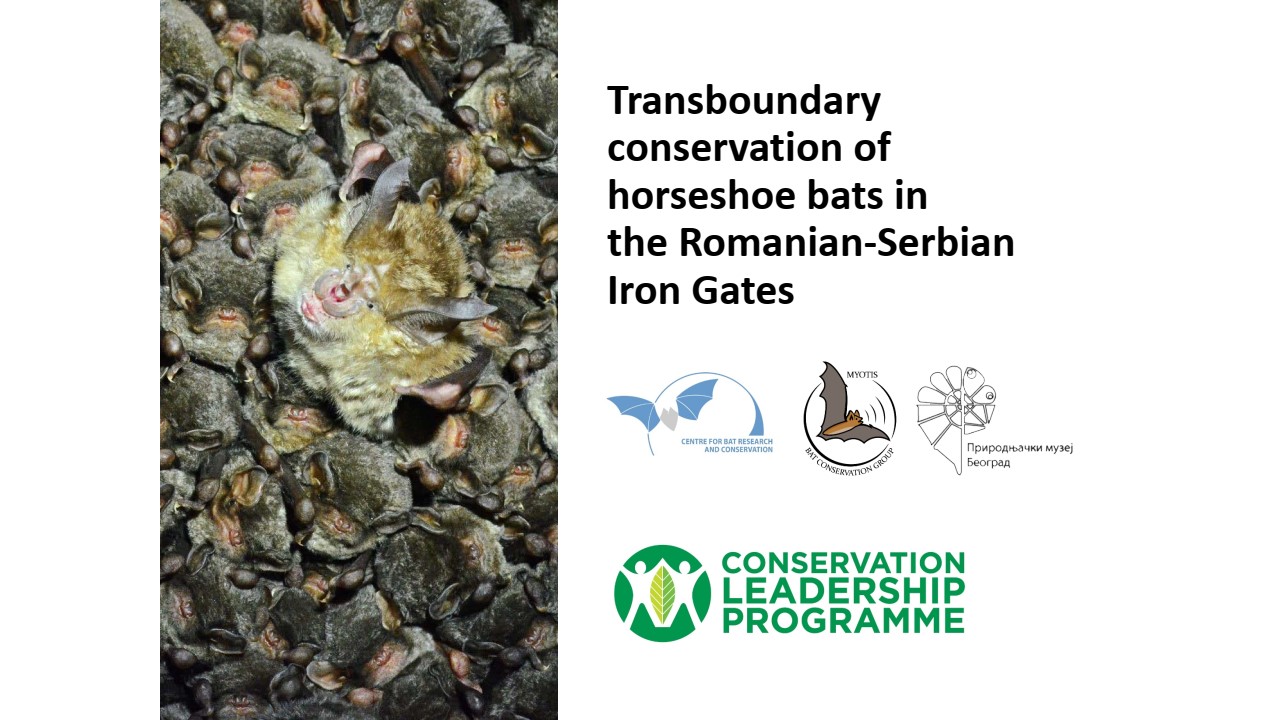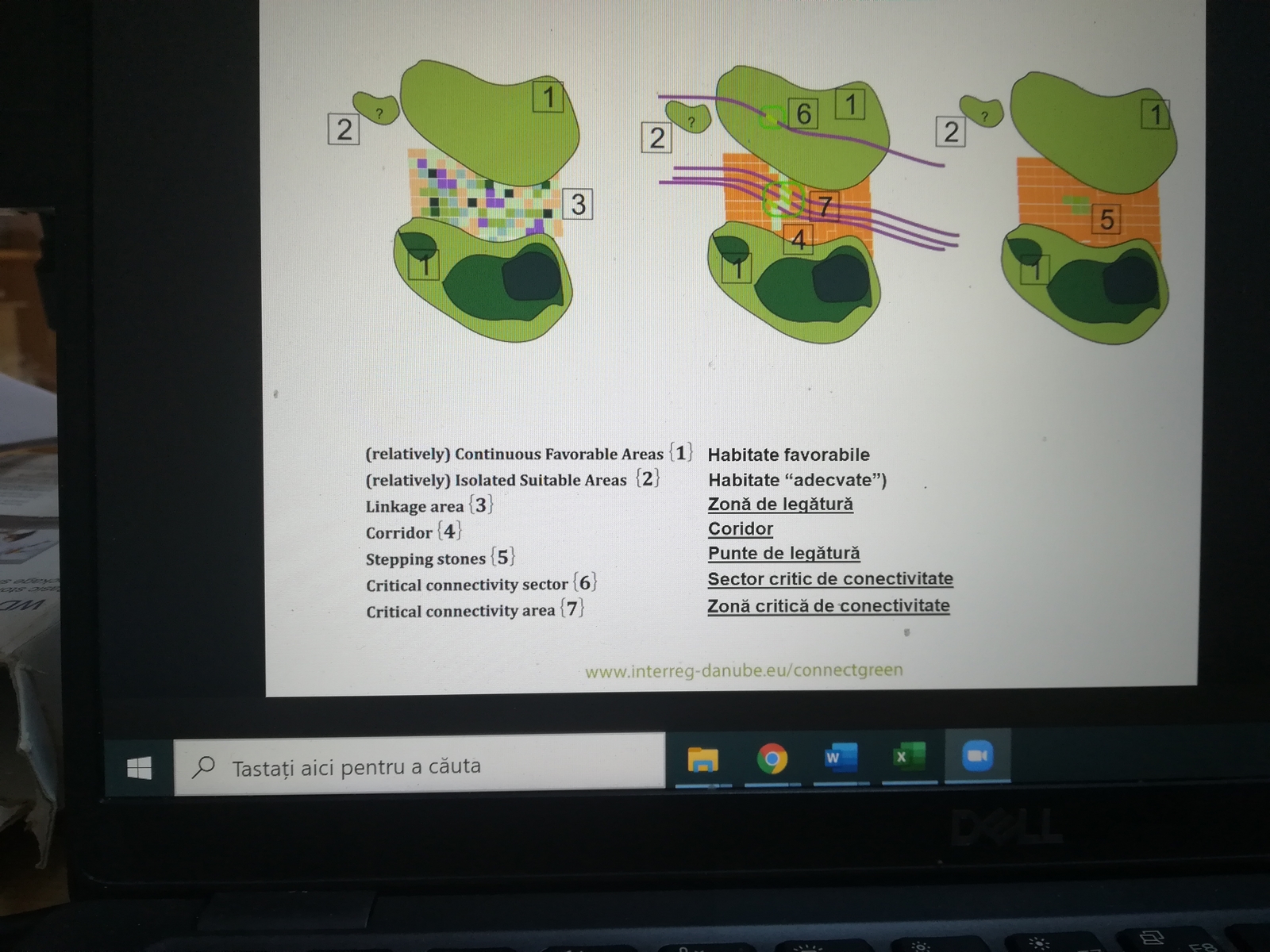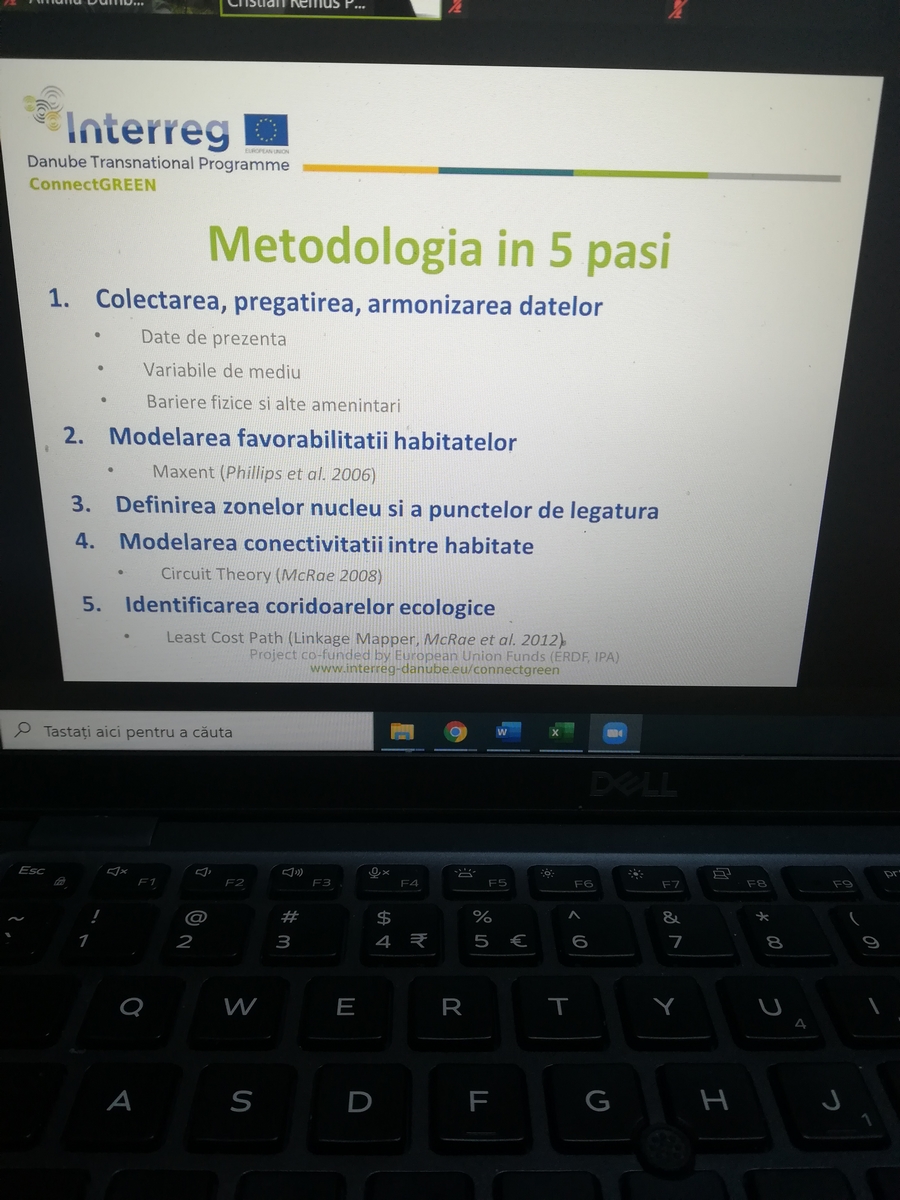D2C - Project dissemination and networking in Romania
30-11-2020
Romanian project partner the Iron Gates Nature Park Administration is active also in the dissemination of information about the project, networking and expert discussions in Romania.
Amalia Dumbravă from the park administration participated in the online project meeting regarding transboundary bats monitoring activities on Friday, November 13. It was organized by the Centre for Bat Research and Conservation, an NGO, which is also on the list of the D2C project stakeholders in Romania. Together with another NGO from Sebia it is implementing the project ”Transboundary conservation of horseshoe bats in the Romanian-Serbian Iron Gates”, financed by Conservation Leadership Programme.
Their objectives are 1. to get clear proofs of cros-border Romanian - Serbian bat migration 2. to convince decision makers for joint conservation 3. to join bat researchers in mixed teams 4. to do parallel field-work on both sides of the Danube during all four seasons 5. to make bat-friendly closing of the most exposed location 6. to make warning signs at 15 key locations and 7. to make bat-themed interactive elements at visitor centres of all target protected areas
Amalia suggested to take in consideration not only the protected ares from their interest region, but also the area from the borders without protected areas, marked on their map, attached here. As it was discussed during the meeting, it is also a result of one of the studies carried out in our pilot region regarding the bats monitoring, because the same experts discovered bats ringed and new colonies in our study (within D4.1.4).
A few days later, on November 23, Amalia Dumbravă as the D2C Romanian project partner participated in a workshop for ecological corridors for large carnivors within DTP project ConnectGREEN. The discussion was about a design (territorial view) of future ecological corridors and also about legislation for designation of the ecological corridors in Romania. Amalia also discussed next steps of this new concept with Romanian minister of enviroment and forestry. She also suggested to WWF Romania, which is the Romanian partner involved in the ConnectGREEN project, to take in consideration some migration corridors across the Danube, because we have a lot of proves for cross border migration of large mammals - erbivors and carnivors. A change of the map according to this information was agreed (see the map here). A collaboration with the ConnectGREEN project, which is by the way present also in other project countries, e.g. in Slovakia, is good use of networking opportunities provided by the Danube Transnational Programme.
A few slides from online meetings:
Project meeting Transboundary conservation of horseshoe bats in the Romanian-Serbian Iron Gates



Project meeting ConnectGREEN:



